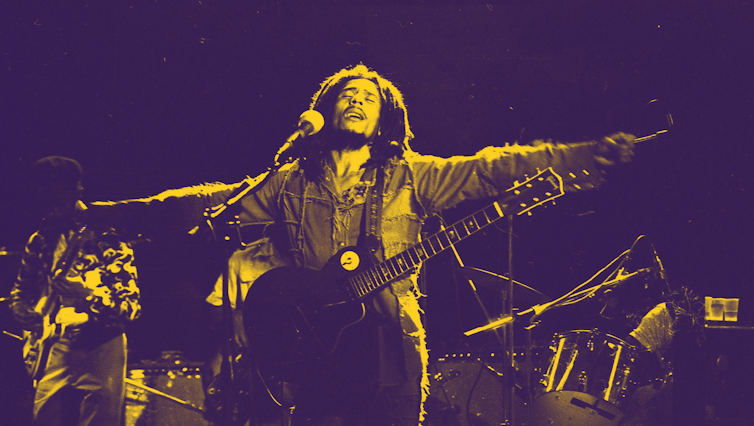
Les Johnson, Birmingham City University
Like me, you’ve probably found that listening to old songs can transport you back in time. Memories associated with the music flood your brain and so too can the associated emotions.
Research suggests that because emotions enhance memory processes and music evokes strong emotions, music could help us form memories – either about pieces of music or about experiences associated with particular music.
I experienced this quite recently while I was rummaging through my father’s record collection. I was surprised by how much it affected my emotions. Memories from my childhood came rushing back and I began to really understand the connection between memory and music – I could clearly see how these records have shaped who I am today.
My dad was the son of a preacher from Dundee Pen, a rural parish in Hanover, Jamaica. He was part of the second wave of the Windrush generation. He came to Britain with a single aim and a Dulcimena, a type of suitcase. The aim was to return home to Jamaica one day with his wife and build their dream home. He worked hard – first shift work, then nights – meaning that in the 1960s we didn’t see him much except at weekends. That’s when the record collection came out.
Although he was quite religious, his record collection was eclectic, in the sense that alongside
– from whom I eventually learned to play the guitar by slowing down the 45rpm (revolutions per minute) vinyl to 33rpm.My dad’s friend would bring fresh bun (a sweet, spiced bread often with added dried fruits), coconut drops and hard dough bread with steamed rice and callaloo, a popular Caribbean vegetable dish. Dad had a Grundig radiogram – something I have inherited. This was his sophisticated sound system. Mine is much more expensive but now too often, ironically, bypassed for my iPhone and Spotify.
The post-Jamaican independence songs of the mid-1960s and 1970s like
(1972) were our favourites, and stood for us, at the time, as the personification of resistance songs.After all, Jamaica was independent, so we could sing, dance and celebrate, in the moment, while still coexisting alongside the harsh realities of British society and
.Although my dad’s record collection was inspirational, it was our family friend Herman, who had the more radical collection. He had retired from serving in the army and owned a cool 1970 BMW 02 E10. His record collection was much larger and varied:
are just a few examples of the Black music he played from a large jazz, blues and gospel collection.There was a constant theme of self-empowerment and fighting the power in his selections. We argued about this: whose approach to combating racial and social injustice was better,
.Rebel music as pop music
As pop music culture developed in the 1960s and 1970s, it evolved and was often
and many other popular music groups of the period were widely regarded as anti-establishment.This explosion of political and cultural expression in popular music culture was, in many cases, inspired by protest rhetoric from Black musicians. Teenage rebellion galvanised an explosion of new fashions, outlooks and views. This coincided with the civil rights and Black Power movement in the US, which through Black music, articulated struggles, innovations and celebrations of Black life.
By looking back at my dad’s music collection, I understand more clearly that the music I listened to as a child has, in part, shaped my personality. It also provided an important emotional shield and an internal power that helped arm me in the struggles that Black people still experience.
Maybe you might like to take a moment to think about your own experiences listening to music – how a song, playlist, album, cover, concert or performance has impacted you and is still deeply rooted in your memory. I would love to hear what tracks or albums have influenced you and your life story – along with why – in the comments below.![]()
Les Johnson, Visiting Research Fellow, Birmingham School of Media, Birmingham City University
This article is republished from The Conversation under a Creative Commons license. Read the original article.

